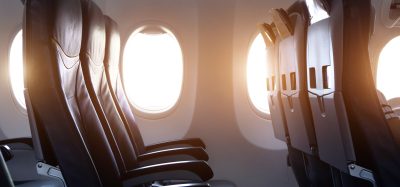Fire training for a safer airport
- Like
- Digg
- Del
- Tumblr
- VKontakte
- Buffer
- Love This
- Odnoklassniki
- Meneame
- Blogger
- Amazon
- Yahoo Mail
- Gmail
- AOL
- Newsvine
- HackerNews
- Evernote
- MySpace
- Mail.ru
- Viadeo
- Line
- Comments
- Yummly
- SMS
- Viber
- Telegram
- Subscribe
- Skype
- Facebook Messenger
- Kakao
- LiveJournal
- Yammer
- Edgar
- Fintel
- Mix
- Instapaper
- Copy Link
Posted: 16 September 2005 | Tim Oakes, Divisional Officer, International Fire Training Centre | No comments yet
The best training for your airport’s Rescue and Fire Fighting Service (RFFS) will not necessarily focus solely on technical ability, writes Tim Oakes.
The best training for your airport’s Rescue and Fire Fighting Service (RFFS) will not necessarily focus solely on technical ability, writes Tim Oakes.
When an incident occurs at your airport, you are thankful that the brave fire fighters speeding to the scene are adequately trained, with the best equipment at their disposal and the knowledge of how to use it. Or maybe you are not so certain.
When it comes to lives, few would disagree that no expense should be spared for their preservation and in many ways this effort starts and ends with the training and equipping of the fire fighters at your airport. The principal objective of an aerodrome RFFS is to save lives in the event of an aircraft accident or incident. This includes the need to extinguish a fire that may occur immediately following an accident or incident, or during the rescue stage.
Achieving this will be dependent on the training personnel have received, the effectiveness of the equipment and the speed with which competent personnel and equipment can be put to use.
Aircraft fires
Aviation fires are unique due to the vast quantities of aviation fuels that may be involved and the rapid intensity of any fire. The main requirement for responding to incidents is therefore the speed of the response and the protection of the fuselage with high output monitors. However it is also critical that the application is carried out correctly; a vehicle on full output is able to discharge its water content within 3 minutes. It is also vital that a breathing apparatus team is able to enter the aircraft safely and quickly due to the potential of any external fire becoming an internal fire situation.
These demanding requirements of an aircraft fire have determined the IFTC’s approach to training. It actively promotes the combination of sound technical training and the ability to practice these skills in a safe and realistic practical environment.
However technical training alone should not be seen as the only component for effective fire fighting, it should also be complemented by teamwork. Technology can assist fire-fighters to carry out their task quickly and safely, for example thermal imaging cameras, but teamwork is still vitally important. Each individual must be competent in their role and task in order for any incident to be brought to a successful resolution. The Incident Commander needs to be able to make decisions for command and control, but he/she also needs the firefighters to be able to carry out their own tasks as well.
Recommendations and requirements
International recommendations for rescue and fire fighting services at airports have been defined by ICAO’s Annex 14 since 1951. For more than fifty years its recommendations regarding personnel have been promoted by this paragraph: (9.9.30)
“All rescue and fire-fighting personnel shall be properly trained to perform their duties in an efficient manner and shall participate in live fire drills commensurate with the types of aircraft and type of fire-fighting equipment in use at the aerodrome, including pressure fed fuel fires.”
However ICAO lacks the authority to do anything but recommend this approach to the training and provision of fire-fighting services in airports. Even so, more than fifty years later many countries continue to comply with these standards. Compliance is usually brought about through regulation and inspection by a Civil Aviation Authority or similar Government arm. Much development has also been conducted in improving equipment training and facilities throughout the world and many still look to the UK for the standards to be achieved.
Training to standards
The International Fire Training College (IFTC) provides training to meet the international recommendations of ICAO and is the only UK provider to be accredited by the UK Civil Aviation Authority (CAA) to deliver the full range of mandatory training programmes required under CAP 168 (licensing of Aerodromes) and encompasses the requirements of CAP 699 (Standards for the Rescue and Fire Fighting personnel employed at UK licensed aerodromes). These include Fire-fighter, Crew Commander, Watch Commander and Fire Service Manager programmes. These programmes provide knowledge, understanding and skills in each role.
Applicants to the ITFC need to be medically fit and capable of carrying out their duties as identified by the CAP 168 Licensing of UK Aerodromes. Other criteria regarding the required competence of personnel for rescue and firefighting is defined in CAP 699 standards. Upon completion of technical and practical assessment a CAA certificate of competence is awarded with a validation of four years.
Advanced facilities
The IFTC has one of the most extensive fire training grounds in the world and is capable of burning either liquid propane or aviation fuel. The training ground has taxiways and aprons, a number of large passenger aircraft (in various locations) and simulators including a 737-fuselage section, a mock-up of the front section of a Boeing 747, military aircraft and a S76 helicopter.
Other rigs include an undercarriage unit mounted on an under-wing section, high and low level engines, an internal fire unit and a large fire screen. We also have a fleet of vehicles including four aviation fire appliances and one local authority vehicle.
The IFTC use vehicles that are commensurate to aerodrome training needs. Standard Breathing apparatus is used and other ancillary equipment hoses branches etc. Rescue equipment is not used at the training centre and this is left to station training due to the vast differences of rescue equipment available.
Training for Command and Control at major aircraft accidents/incidents is enhanced by the use of a unique Command and Control virtual reality simulator which uses a team approach. The ETC Command and Control Simulator is the only one of its kind, configured specifically for UK RFFS operations. Its purpose is to provide real time opportunities for Watch Commanders and Crew Commanders to make operational decisions that are difficult, or at times, impossible to arrange in any other way.
The main advantage to using the system is that command training is carried out in a safe environment and incorporating elements within scenarios that cannot easily be replicated on a training ground, which if necessary can be used to repeat training exercises, to reinforce training outcomes.
Further to this, the degree of immersion achieved using the system is considerable. As a result, Commanders find themselves making decisions in a high stress, high stakes, high risk, time pressured environment. It is exposure to exactly these sorts of pressures that help Commanders develop a form of naturalistic decision making, referred to as Recognition Primed Decision Making (RPD). Much work has been carried out in the field of command psychology that is providing evidence that Commanders really do need the ability to make lots of pressurised decisions, in order to positively enhance their operational decision making skills.
The system can be configured to offer one, two or three vehicle airport fire services and up to ten operational staff. The aircraft available reflect the range of types in everyday service, from B747 down to a Cessna 152. All types of weather conditions, at any time of the day, can be built into what amounts to an infinite number of emergency scenarios.
International scope
The college has trained delegates from over 80 countries and offers a world wide consultancy service to assist airports in the development of standard operating procedures and training programmes. Training has also been conducted on-site at airports all over the world. This allows our trainers to look at different equipment, resources and operational procedures and to develop subject matter accordingly.
We are also actively involved with both the Airport Operators Association Rescue & Fire Fighting Service Working Group (AoA RFFS WG) and the Airport Fire Officers Association (AFOA) in the continual development of structured learning programmes to meet the needs of industry.
The team of trainers at the college is made up from people with various backgrounds, including airports, local authority, military and petrochemical industries; they are supported by a technical department, including fireground support, breathing apparatus department, stores and motor transport. Delegates can be accommodated within our residential facilities. The majority of rooms are en suite and there is also a restaurant, a fitness room and bar area.
This is an exciting time for aviation with the New Generation Large Aircraft (NGLA). However new aircraft present new challenges and we are currently in dialogue with the industry to disseminate the relevant information as appropriate. Airports that are likely to take these new aircraft will need to develop training accordingly.
In the future the college has plans to include the purchase of a wide bodied training simulator to meet the training needs for NGLA, development of our water treatment plant and more accommodation. This is part of our effort to meet the fire-fighting requirements of the aviation world, with quality training delivered in a safety oriented culture by a team of qualified and competent individuals.
An aviation fire-fighter needs team spirit, discipline, confidence, flexibility and an overawing commitment to safety. To those passing out of the college I provide this piece of advice: “Have confidence in your ability; think about all the training you have received at IFTC, on station or elsewhere that is given to ensure you are competent in role. Listen to all of the information relating to the situation, and communicate with others. Above all, remember you are a professional within a professional service.”
Tim Oakes
Divisional Officer Tim Oakes has been at the IFTC since 1989. He arrived as a Sub Officer Instructor after completing ten years in the Royal Air Force Fire Service and employment with British Aerospace at Brough Humberside.














